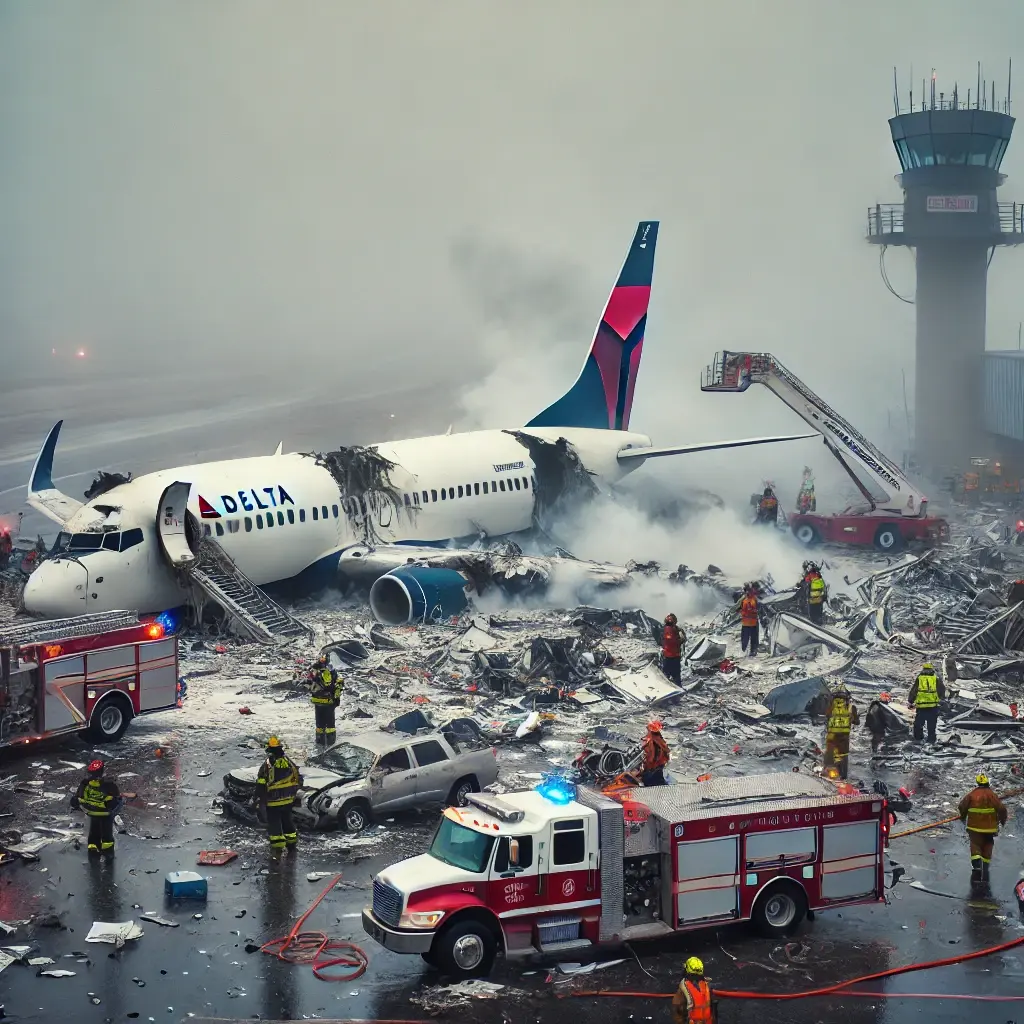
On July 31, 1973, Delta Flight 723, a McDonnell Douglas DC-9, crashed during its final approach in thick fog at Boston Logan International Airport. The crash resulted in the deaths of all but one of the 89 people on board, who later succumbed to injuries. This tragic event highlighted the dangers of flying in poor visibility conditions and led to increased scrutiny and improvements in aviation safety protocols, including advancements in navigation systems and changes in approach and landing regulations.
The crash of Delta Flight 723 on July 31, 1973, remains one of the most tragic incidents in the history of aviation. As the McDonnell Douglas DC-9 aircraft attempted its final approach to Boston Logan International Airport in thick fog, it failed to reach the runway and crashed, resulting in the deaths of 89 people on board. The sole initial survivor later succumbed to injuries, making the disaster a sobering reminder of the perils associated with flying in poor visibility conditions.
Delta Flight 723 was en route from Burlington, Vermont, to Boston, Massachusetts, with a scheduled stop in Manchester, New Hampshire. As the plane neared its destination, Boston Logan International Airport, the weather conditions deteriorated significantly. The dense fog that enveloped the airport reduced visibility to dangerously low levels, complicating the landing process for the flight crew.
During the final approach, the pilots of Delta Flight 723 relied heavily on their instruments due to the poor visibility. However, a series of miscommunications and technical issues contributed to the aircraft descending below the glide path. The DC-9 struck a seawall approximately 3,000 feet short of the runway, skidded across the ground, and disintegrated upon impact. The resulting fire and destruction were devastating, and emergency responders faced significant challenges in their rescue efforts.
The National Transportation Safety Board (NTSB) conducted a thorough investigation into the crash of Delta Flight 723. Their findings revealed several critical factors that contributed to the accident. Key among these was the reliance on outdated navigation equipment and insufficient communication between the flight crew and air traffic control. Additionally, the investigation highlighted issues with the crew’s situational awareness and decision-making under the stressful conditions of low visibility.
The tragedy of Delta Flight 723 had profound implications for aviation safety. The accident underscored the need for improved technology and procedures to ensure safe landings in adverse weather conditions. In response to the crash, the aviation industry and regulatory bodies implemented several important changes aimed at enhancing flight safety and preventing similar accidents in the future.
One of the significant advancements that emerged from the aftermath of the crash was the development and widespread adoption of Instrument Landing Systems (ILS). These systems provide precise guidance to aircraft during the approach and landing phases, even in conditions of low visibility. By transmitting radio signals to the aircraft’s instruments, ILS helps pilots maintain the correct glide path and alignment with the runway, reducing the risk of descent below the intended flight path.
Additionally, the crash prompted improvements in cockpit resource management (CRM) training for flight crews. CRM emphasizes the importance of communication, teamwork, and decision-making among the cockpit crew, especially in challenging situations. By fostering better coordination and situational awareness, CRM aims to enhance the overall safety of flight operations.

The accident also led to changes in air traffic control procedures, particularly regarding the handling of aircraft during approaches in poor visibility. Controllers were trained to provide more precise and timely information to pilots, helping them navigate safely through adverse weather conditions. Enhanced communication protocols were established to ensure that flight crews received clear and accurate instructions during critical phases of flight.
The crash of Delta Flight 723 further highlighted the importance of robust emergency response capabilities at airports. The incident underscored the need for well-equipped and well-trained emergency services to handle aviation disasters effectively. In the years following the crash, airports around the world strengthened their emergency response protocols, ensuring that rescue and firefighting teams could respond swiftly and efficiently to accidents.
The legacy of Delta Flight 723 is reflected in the continuous efforts to improve aviation safety standards. The lessons learned from the tragedy have been incorporated into the design and operation of modern aircraft, navigation systems, and airport infrastructure. The advancements made in technology, training, and procedures have significantly reduced the risk of similar accidents, contributing to the overall safety and reliability of air travel.
While the crash of Delta Flight 723 remains a poignant chapter in aviation history, it also serves as a testament to the resilience and determination of the aviation community to learn from past mistakes and strive for continuous improvement. The safety measures and technological innovations that emerged in the wake of the accident have saved countless lives and ensured that air travel remains one of the safest modes of transportation.
In remembering the victims of Delta Flight 723, the aviation industry honors their memory by committing to the highest standards of safety and professionalism. The tragedy serves as a constant reminder of the responsibility borne by all those involved in aviation to prioritize safety above all else and to remain vigilant in the face of new challenges and evolving risks.
Today, the impact of Delta Flight 723 can be seen in the robust safety culture that permeates the aviation industry. The advancements in technology, training, and regulations that followed the crash have created a safer and more resilient air travel system. The commitment to learning from past tragedies and implementing meaningful changes continues to drive progress in aviation safety, ensuring that the legacy of Delta Flight 723 contributes to a safer future for all.
